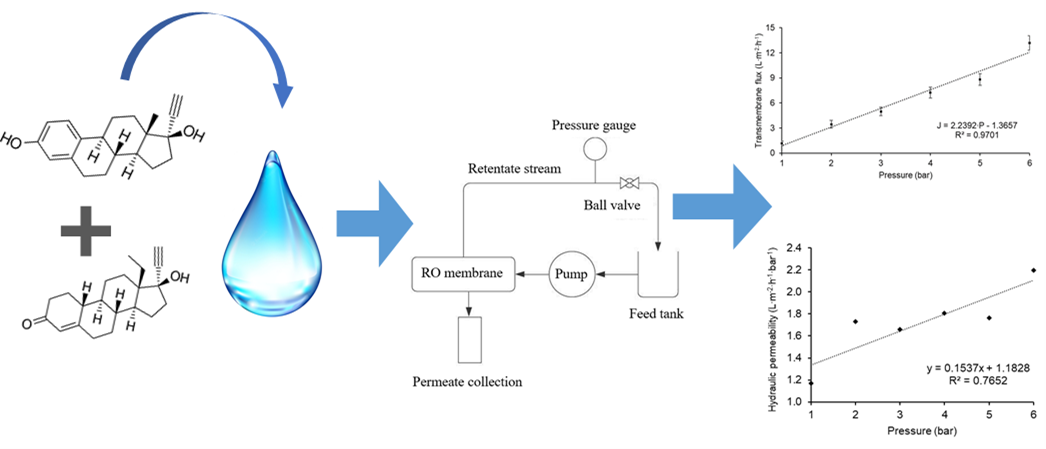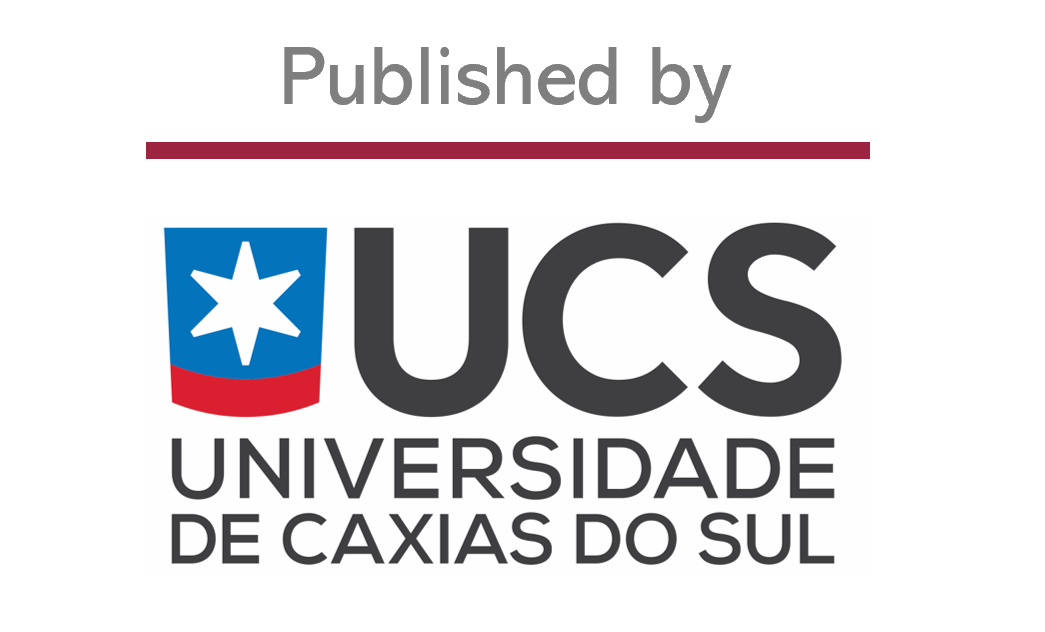Study of the efficiency of the removal of steroid hormones from water by reverse osmosis
DOI:
https://doi.org/10.18226/23185279.e231104Keywords:
membrane separation processes, treatment of effluents, contraceptives, hydraulic permeabilityAbstract
Water contamination by micropollutants is increasing, including steroid hormones. Indiscriminate use, incorrect disposal, inefficient treatment of water and effluents, and less restrictive legislation promote the contamination of effluents and water, with harmful consequences for the environment and human health. In this work, it was evaluated the use of reverse osmosis in the removal of ethinylestradiol and levonorgestrel, synthetic steroids that are components of contraceptives. The hydraulic permeability of the membrane was assessed before, during, and after reverse osmosis of an aqueous solution of contraceptive, as well as the retention of hormones, of a synthetic solution of contraceptive used as the feed. 95.6% retention of the compounds was observed, demonstrating the efficiency of reverse osmosis in the removal of solutes. In addition, there was no important reduction of the hydraulic permeability of the membrane when compared to the clean membrane and after reverse osmosis, demonstrating that the cleaning step was efficient in removing fouling or other interferents formed during the process. Reverse osmosis was efficient in the removal of constituents of contraceptives from aqueous solutions, being an option in the treatment of water and effluents aiming to attain better potability and smaller toxicity risks for the environment and human health.

Downloads
Published
How to Cite
Issue
Section
License
Copyright (c) 2023 Débora Carolina Vanni, Wendel Paulo Silvestre, Camila Baldasso (Author)

This work is licensed under a Creative Commons Attribution 4.0 International License.
Declaração de originalidade e cessão de direitos autorais
Declaro que o presente artigo é original, não está sendo tendo sido submetido à publicação em qualquer outro periódico nacional ou internacional durante o processo de revisão. Através deste instrumento, em meu nome e em nome dos demais co-autores, porventura existentes, cedo os direitos autorais do referido artigo à revista SCIENTIA CUM INDUSTRIA. Contudo, a reprodução total ou parcial impressa ou eletrônica pode ser feita desde que o autor comunique oficialmente à revista. Declaro estar ciente de que a não observância deste compromisso submeterá o infrator a sanções e penas previstas na Lei de Proteção de Direitos Autorias. Declaro estar ciente de que a não observância deste compromisso submeterá o infrator a sanções e penas previstas na Lei de Proteção de Direitos Autorias (Nº9610, de 19/02/1998).




